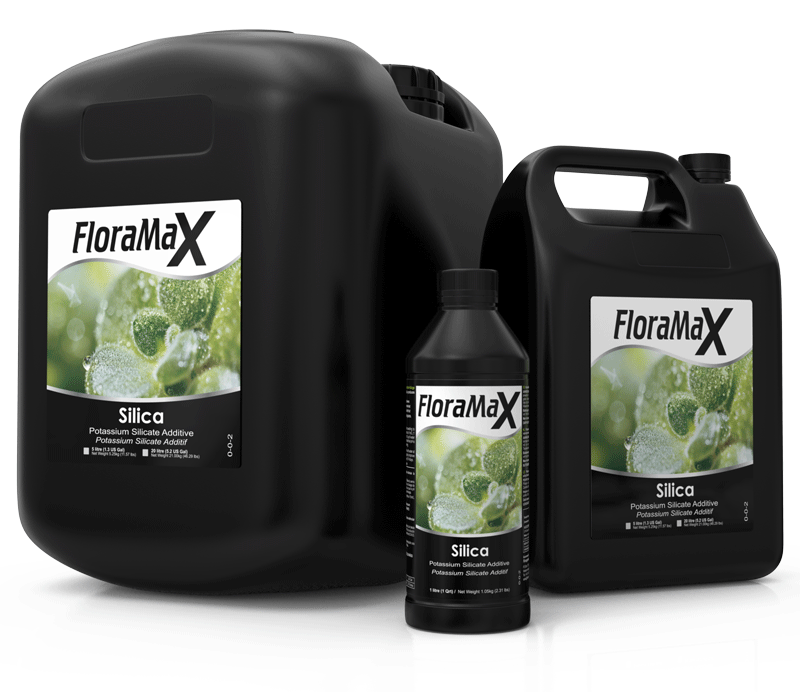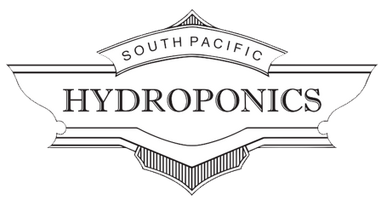*** Order Online Now for Home Delivery or Click & Collect... ***
Silica
$36.36
Buy and save
Buy and earn $1.20 Loyalty for your next purchase
Loyalty is a discount program that lets you buy products and earn points to redeem on your next purchase. Your Loyalty balance is updated when you pay online or in-store. The Loyalty amount shown on this page can be recalculated at the checkout.
Volume
Please choose
Save this product for later
Silica
Product Details
Brand: FloraMax
FloraMax Silica
Monosilicic Acid for hydroponic plants
 FloraMax Silica 0-0-8 contains 16% silica* present as Mono-silicic Acid (“MSA”) and Meta-silicic Acid (“MTSA”). Both of these compounds are completely soluble in nutrient solutions and 100% bio-available. This yields several benefits for hydroponic growers:
FloraMax Silica 0-0-8 contains 16% silica* present as Mono-silicic Acid (“MSA”) and Meta-silicic Acid (“MTSA”). Both of these compounds are completely soluble in nutrient solutions and 100% bio-available. This yields several benefits for hydroponic growers:
- Improves the rigidity of stems and leaves.
- Helps prevent leaf wilt during extreme heat.
- Helps increase weight, potency and shelf-life of fruit.
- FloraMax Silica is highly concentrated. 1.0 litre (1.05 Qrt) makes 4,000 – 10,000 litres (1,050 – 2,640 Gal) of working nutrient.
- Highly stable – shelf-life exceeds 20 years (testing origins predate 1998).
- Available in larger pack sizes – 1L, 5L, 20L and 1,000L – suitable for large scale commercial applications.
- Dosage: 0.1-0.25ml/L (0.25 – 1 ml/Gal) during veg and flower. Silica should be applied to an existing nutrient solution and used throughout both veg and flower. Silica is also very effective as a foliar spray at 3ml/L (3ml/Qrt).
* Reference: Molybdosilicate Method 4500-Si D., Standard Methods for the Examination of Water and Waste Water, 19th Edition 1995, p4-118,119. Prepared and published jointly by American Public Health Association, American Water Works Association and the Water Environment Federation.
 Plant available forms of silica? To ensure plant availability, silica needs to be present in the nutrient solution in a soluble form. This is achieved by hydrating the silica molecule:
Plant available forms of silica? To ensure plant availability, silica needs to be present in the nutrient solution in a soluble form. This is achieved by hydrating the silica molecule:
• SiO2 + 1H2O —> SiO3H2 (metasilicic acid, “MTSA” – smaller molecule)
• SiO2 + 2H2O —> SiO4H4 (monosilicic acid or orthosilicic acid, “MSA” – larger molecule)
Bioavailability of FloraMax Silica is confirmed via “silica-demand” analysis of re-circulating hydroponic nutrient reservoirs using *AWWA’s Molybdosilicate Method: 80ppm silica dose 100% consumed within 7-10 days; approx 10L working nutrient per plant (1998).
Why use a silica nutrient for hydroponic plants? 
Hydroponic plants are often susceptible to leaf wilt and bud rot, especially when exposed to heat from HID lamps. Silica helps strengthen plant cells to prevent limp or weak growth. Silica, known chemically as silicon dioxide (SiO2), is the chemical form that silicon (Si) adopts in plant matter. Silica is NOT the same as silicon. Silicon is the stuff computer chips and car polishes are made from.
Combating heat stress: FloraMax Silica is very effective for combating leaf wilt during summer heat. Prevention treatment is best done by applying Silica as a foliar spray 3ml/L (3ml/Qrt). This typically allows plants to endure ambient grow room temperatures upwards of 40 deg C (104 deg F). Foliage remains rigid and turgid so that photosynthesis can continue unaffected.
Display prices in:AUD

